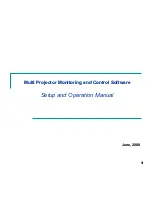
2-22
About Universal Volume Manager Operations
Hitachi Universal Storage Platform V/VM Universal Volume Manager User’s Guide
Using a Mapped External Volume from a Connected Host
There are two ways of using the mapped external volume from a host that is
connected the local storage system.
•
Storing the new data in the mapped external volume
•
Using the existing data in the mapped external volume
Storing New Data in the Mapped External Volume
To store new data in a mapped external volume from a host that is connected
to the local storage system:
1.
Map the volume in the external storage system as an internal volume of
the local storage system using Universal Volume Manager.
Select the emulation type of the mapped volume as you required. If you
select the emulation type for the open system (such as OPEN-V), go on to
the step 2. If you select the emulation type for the mainframe system
(such as 3390-3), go on to the step 3.
2.
If you set the emulation type for the open system when you map the
volume, the status of the mapped volume automatically becomes Normal.
If you need to initialize the data area of the mapped volume, format the
volume using the VLL function. For the volume formatting procedure, see
the
Virtual LVI/LUN and Volume Shredder User's Guide
.
Go on to the step 4.
3.
If you set the emulation type for the mainframe system when you map the
volume, the status of the mapped volume becomes Blockade. Format the
volume using the VLL function.
Note:
For zero-formatted external volumes, when you select that volume to
map, you can use the VLL function to perform the
Write to Control Blocks
operation to restore the volume. For instructions on how to format volumes
and the
Write to Control Blocks
operation, see the
Virtual LVI/LUN and
Volume Shredder User's Guide
.
Go on to the step 4.
4.
To perform the host I/O operations, set the LU path from the Target port to
the mapped volume.
After the LU path is set, the host I/O operation to the mapped volume
becomes available.
















































